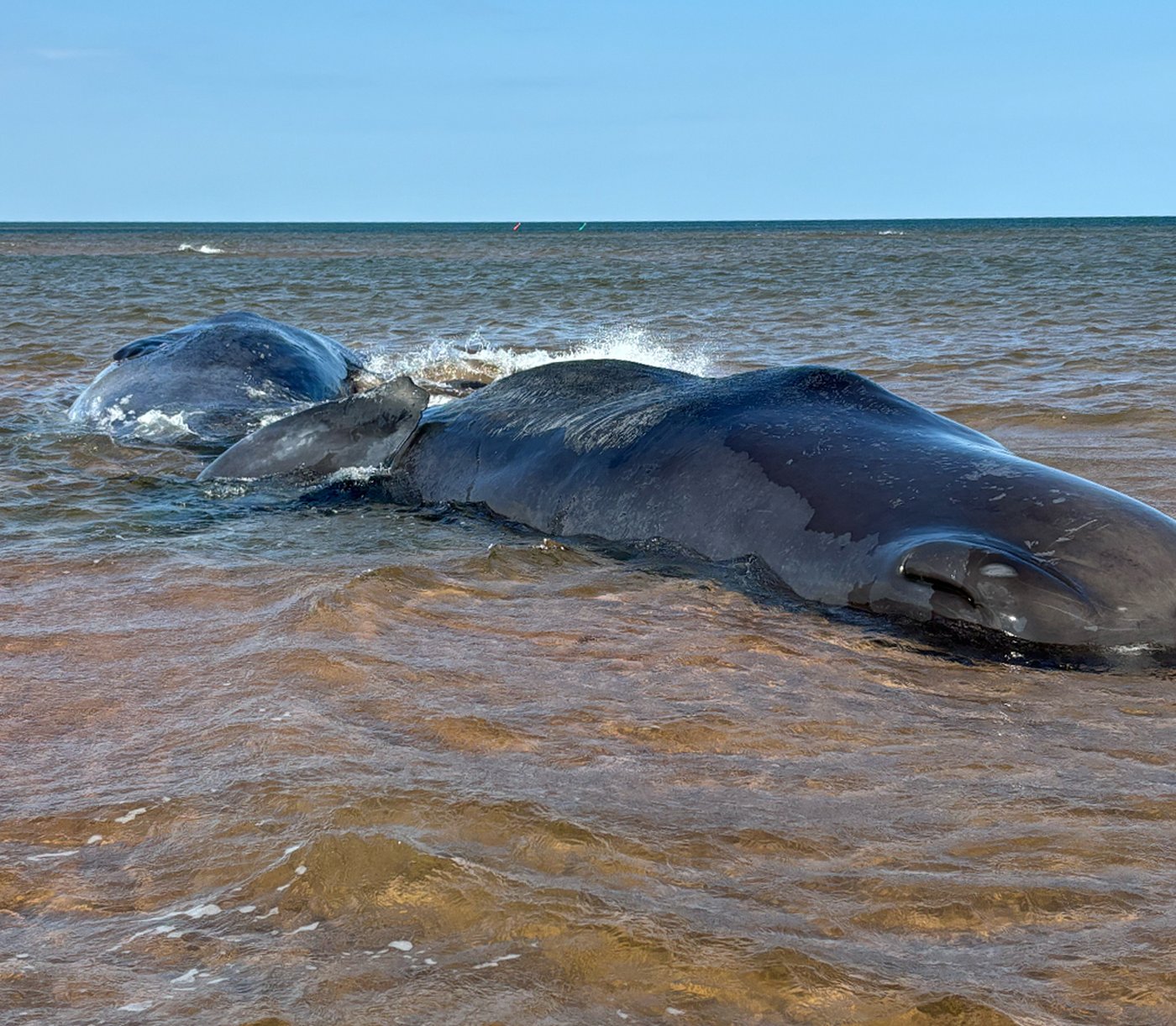
Conservation group preparing to perform necropsies on dead sperm whales in P.E.I.
A conservation group is planning necropsies on three sperm whales that died after being stranded off the northern coast of Prince Edward Island.
Tonya Wimmer, executive director of the Marine Animal Response Society, said one of the first steps is moving the bodies to a suitable place for the necropsies. She explained veterinarians and pathologists would not be able to do their work on the beach where the whales died since it was a remote location.
“We’ve got commitment from, thankfully, the Lennox Island First Nation, to be able to take the animals there and do the necropsies on a beach and then bury them on site,” she said. “But it’s still trying to figure out how to get them there off the other islands.”
The whales were found stranded on Saturday night near Hardy’s Channel at East Bideford, P.E.I. By the next morning, one of the three had already died. The other two died soon after that.
Hal Whitehead, professor at Dalhousie University’s biology department, said sperm whales are usually found in waters deeper than about 1,000 meters, so to see them in shallower waters of the Gulf of St. Lawrence was a “bit unusual.”
They’re mostly found in the deepest part of the Gulf of St. Lawrence, which is the channel that runs from the Cabot Strait between Newfoundland and Nova Scotia right through in towards the St Lawrence estuary, he said.
Some of the theories about why they were stranded on the beach could be a magnetic anomaly, underwater earthquakes or sounds made by humans in the ocean, he said.
“There’s quite a few ideas out there, but none of them have a heck of a lot of data backing them up.”
Sperm whales have a “strange” social system where males are found in colder waters of the Arctic and Antarctic while females are found in the tropics or subtropics, he said.
When a single animal is stranded, he said it could be because it is sick or old, or perhaps confused.
But when there is more than one, he explained it would usually mean they are fairly healthy.
“That adds to the puzzle.”
Wimmer’s team measured the size of the whales, with the smallest one being 10 metres and the other two about 11 metres in length — or about the length of a standard yellow school bus or a three storey building.
Wimmer said heavy equipment like excavators would be used to move the animals.
Several people would subsequently conduct the necropsies, including veterinarians, pathologists and members of the Marine Animal Response Society, she added. They would look at the whales from the outside, cut them open and then study them from the inside, she said.
“People can think about it from the idea of an onion, and you’re kind of opening it up layer by layer,” she said. “It’s a very systematic process to look at every possible part of this animal.”
Whitehead said a necropsy is “extremely valuable” and could also give an idea about the cause of death.
It can also show whether the animals were suffering from any diseases or had parasites.
“Had they been hit by ships? Had their hearing been destroyed by sounds in the ocean?” he said.
“They can also tell us a bit about the health. Are they healthy whales, or are they very thin and poorly nourished? What have they been eating? What’s in their stomach? Is it fish, squid? If it’s fish, what species. It can tell us about their reproductive status — are these sexually mature animals, or not.”
But the necropsies need to be performed within the next few days because the animals are large in size, don’t cool down quickly and could deteriorate fast, Whitehead said.
Wimmer said the report from the necropsies may take anywhere from a few weeks to a few months to complete.
This report by The Canadian Press was first published Oct. 2, 2025.
Join the Conversation!
Want to share your thoughts, add context, or connect with others in your community?
You must be logged in to post a comment.



















